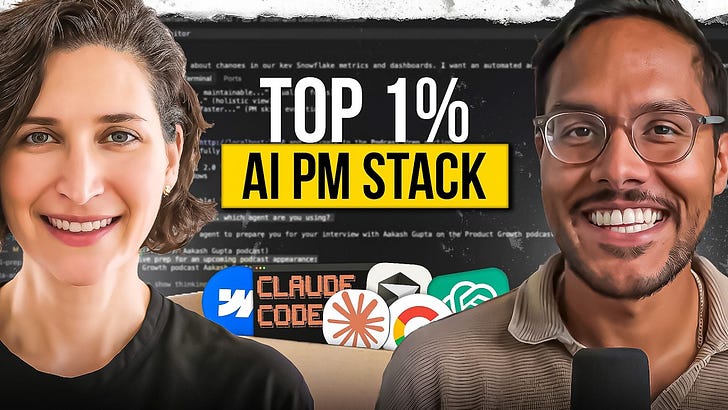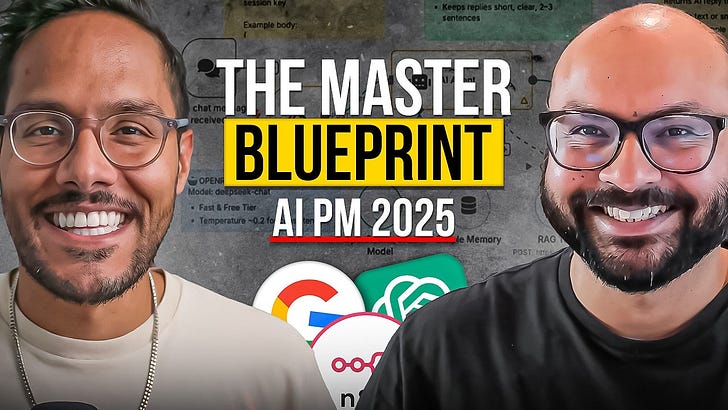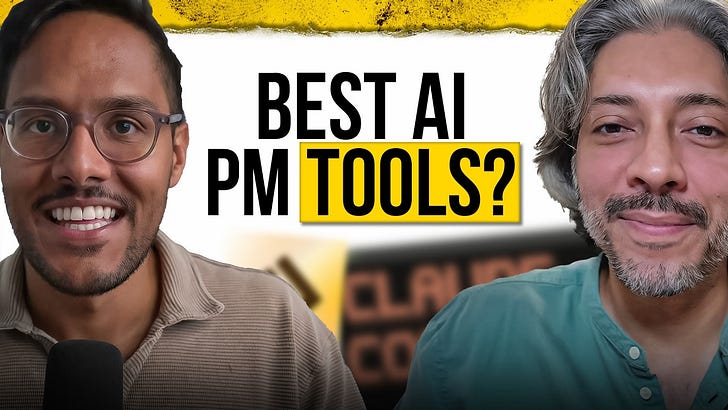Part 1 - The AI Agents Demo
Part 2 - The Linear Method
Check out the conversation on Apple or Spotify and the demo on YouTube.
Brought to you by:
The AI Evals Course for PMs & Engineers: You get $800 with this link
Vanta: Automate compliance, Get $1,000 with my link
AI PM Certification: Get $500 with code AAKASH25
Maven: Get $100 off my curation of their top courses
Today’s Podcast
Can you imagine trading a CTO title for an IC role… and taking a pay cut to prove a point?
That's exactly what Nan Yu did.
Now, as Head of Product at Linear (a $1.25B unicorn powering OpenAI and top AI startups), he's rewriting how tech companies build.
Can you also imagine building a billion-dollar product with just two product managers?
He spills all the tea in today’s audio podcast:
He also does a separate demo on ai agents for coding on YouTube.
It is the perfect breakdown for how PMs can go from Linear tasks to full-blown changes to their app.
The era of the PM-as-builder is here.
Your Newsletter Bonus:
For being a newsletter subscriber, we also put together a specific post on Linear Method just for you.
The Linear Method
At Linear, a unique way of working called The Linear Method is used to build their super-cool software.
This method helps them move incredibly fast and build things people truly love, without the usual headaches like endless sprints or products packed with useless features.
Let’s break it down into three key principles:
1. Embrace Clarity & Directness
Or quite frankly “Cut the BS and ship the substance”
The Linear team is RUTHLESS about cutting out ambiguity.
This means:
Speak Plain English: Avoid making up new words or using terms that have two meanings. If "issue" is what you call a task in your product, it's only that. This keeps everyone on the same page and stops misunderstandings.
Ditch Indirectness (Yes, Even User Stories): Stop using old ways like "As a user, I want X" stories. According to him, these just hide what you really mean. Most people get how computers work now. Just say exactly what you want done.
Eliminate Busy Work: If you're collecting tons of data or running endless tests, it often shows you're unsure what to do. Instead, the plan is to build a tiny version of your idea quickly.
The market will tell you fast if it works, letting you learn and improve without getting stuck doing pointless tasks.
2. Think Marathon, Not Sprint
Many teams operate on a "sprint-and-burnout" cycle.
Linear champions sustainable momentum.
Here's how:
→ Find Your Consistent Pace
Momentum isn't about crushing yourself in short bursts.
Ask yourself: “What’s a steady, comfortable speed that can be maintained tomorrow, next month, and next year?”
The goal isn’t EHAUSTION.
It’s predictable, high-quality output.
→ Shrink Scope (Linear's "One Weird Trick")
This is arguably the most powerful lesson.
He emphasizes that unshipped code is debt.
It's effort and resources producing inventory that isn't benefiting anyone.
By scoping features as small as humanly possible, teams can ship constantly which provides continuous reward, immediate user feedback, and tangible progress!
→ Integrate Quality into Everything
For Linear, bugs have only two severities: critical or high.
Why? Because a "little bug" seen once can become a MAJOR customer frustration.
It signals a lack of care.
Quality shouldn’t be an afterthought.
It should be an inherent part of every feature.
A feature isn't truly done until its quality bar is met.
3. Build With (And For) Real Users
Linear's user-centricity goes deeper than most of the companies I’ve observed.
a. They collaborate with real individuals.
Forget abstract personas. Linear teams are encouraged to name the exact person they're building for: "Mike from Brex," "Sarah from Acme Corp."
This ensures solutions address actual, named pain points.
b. “How do you build groundbreaking AI features without getting lost in the hype?”
The Linear team showed us exactly how with their AI agents.
They skipped chasing the latest buzzwords.
Instead, they just watched: how were users really trying to handle many AI tools for their async work?
The answer became a super simple, direct solution: agents that act just like another team member in their system.
This lean start let them quickly uncover details (like a human still needs to own the agent's tasks!).
They built, learned from real users, and improved, instead of wasting time on a big, theoretical feature no one needed.
If you’ve read this far, I’m sure you’ll LOVE the audio podcast conversation with Nan Yu, where we dive even deeper into these principles, OKRs, hiring, and more.
And if you want to see the LIVE DEMO of building AI agents in Linear by Nan Yu, then tune in to the video version below:
Key Takeaways
Where To Find Nan
LinkedIn: Nan Yu
X: thenanyu
Personal Website: thenanyu.com
Linear: Linear.com
If you prefer to only get newsletter emails, unsubscribe from podcast emails here.
If you want to advertise, email productgrowthppp at gmail.
Related
Podcasts:
Newsletters:
P.S. More than 85% of you aren't subscribed yet. If you can subscribe on YouTube, follow on Apple & Spotify, my commitment to you is that we'll continue making this content better.














